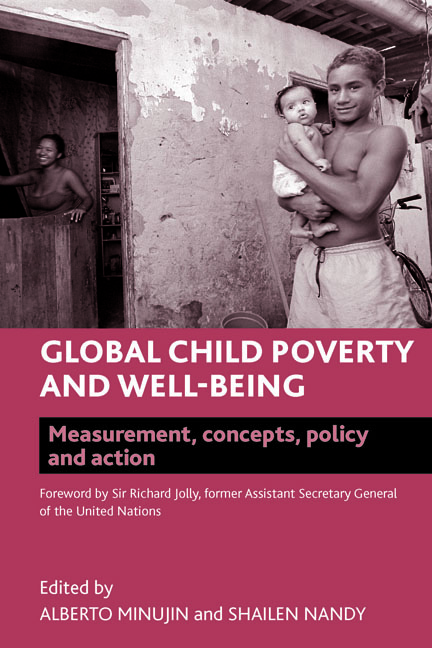sixteen - Child poverty in Latin America: multiple deprivation and monetary measures combined
Published online by Cambridge University Press: 07 September 2022
Summary
Introduction
According to estimates, close to 13% of Latin America's population lived in households with incomes insufficient to meet food needs in 2008, and poverty and inequality were afflicting a large portion (33%) of the population. The percentage of people living in extreme poverty would have grown as a result of the recent international financial crisis, and the number would have reached three million (ECLAC, 2009). The region's income distribution inequality is the most regressive in the world, and has improved little over the last 20 years.
Not all people experience poverty in the same way, are equally vulnerable to it or have the same potential for overcoming it. A significant fraction of the region's children and adolescents face adversities that not only have direct impacts during this phase of their life cycle, but lead to repercussions over the course of their future lives, as well as being transmitted to subsequent generations. The children and adolescents most affected are those who are trapped in situations of insufficient income and who are deprived of their rights to survival, shelter, education, health and nutrition, among other things.
Although many studies have examined poverty, most fail to recognise the specific nature of the poverty affecting children and adolescents. Understanding child poverty requires a multidimensional approach that takes account of both material deprivation (poor or lacking public goods and services directly relevant to children) and family income levels that are insufficient to satisfy the general gamut of needs.
Children and adolescents are of particular concern for a variety of reasons. They are ‘over-represented’ in the poor population (Minujin et al, 2006), they are more dependent and less autonomous in the family context, and they are more vulnerable to the consequences of poverty and inequality. Better knowledge of the determinants and experience of poverty in childhood and adolescence can help to design effective public policy that addresses child poverty and breaks the intergenerational cycle, as well as to evaluate the impact that programmes and projects in the countries have on the breadth and depth of the problem.
This chapter describes the implementation and principal results of a study of child poverty conducted jointly in 2008-09 by the Economic Commission for Latin America and the Caribbean (ECLAC) and the Regional Office of the United Nations Children's Fund (UNICEF TACRO).
- Type
- Chapter
- Information
- Global Child Poverty and Well-BeingMeasurement, Concepts, Policy and Action, pp. 379 - 418Publisher: Bristol University PressPrint publication year: 2012



